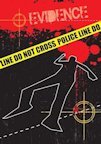If there’s one thing that gets the noses of Gun Nation out of joint, it’s when I refer to guns as ‘adult toys.’ It generates a mountain of outraged emails every time: “How dare you call the thing I use to protect myself and my family a toy?” “I’ll bet you’ve never owned a real gun!” “It’s people like you who want Americans to believe that we don’t need self-defense tools.” And so forth, and so on.
But the truth is, the gun industry itself has begun to promote its products in the same way, and if you don’t believe me, just take a look at the NSSF website promoting its first Shooting Sports Fantasy Camp, to be held this week in Las Vegas for 30 lucky campers, a joyous, three-day wonderment which happens to be all sold out. But don’t worry, you can leave your name on the website and you will be notified when future Fantasy Camps take place.
Here’s what you get for the paltry sum of three grand: a room at the Aliante Casino-Hotel, transportation from the airport to the hotel, meals, a cocktail reception, a goody-bag filled with all kinds of souvenirs, a video of your camp experience and, most of all, 4 shooting sessions and all the 9mm ammunition you need. I guess campers have to bring their own guns, although maybe not because the Clark County range also rents guns.
Now here’s the real deal. The campers will be joined by “six of the top pro shooters in the world,” including the husband and wife Miculek team; Julie Golub, who makes those adorable NSSF videos explaining why gun safety is something the whole family needs to understand; KC Eusebio, who represents an ammunition company, and several more award-winning, competitive shooters. All of the camp instructors come out of the USPSA environment; those are the ‘practical’ shooting folks who run around and blast away at various targets which simulates the how’s and why’s of defending yourself with a gun. Which is, I guess, why the weekend is called a ‘fantasy’ camp.
Incidentally, I don’t know how much things have improved at the Clark County shooting range, but back in 2014 the County Commissioners reluctantly ponied up 30 grand of taxpayer dollars to do a marketing push because the range had lost money every year since it opened in 2009. The granddaddy of all these shooting camps is Thunder Ranch, which has gone through several changes in ownership due to the fact that, when all is said and done, it’s just not that easy to find a lot of people who are willing to shlep all the way to Oregon to do exactly the same thing that they can do either at a local shooting club or, if they have enough space, in their own backyard.
I got my first toy gun when I was six years old. It was a plastic replica of the Colt Single Action Army revolver and I spent hours practicing my fast-draw techniques with this gun, and made sure I was always wearing my Roy Rogers ‘official’ cowboy hat along with my leather holster and belt. The fact that I was standing in front of an apartment building in the middle of New York City didn’t bother me at all. For that matter, I may have seen John Wayne pulling out his six-shooter in the middle of the Wild West, but in fact he was standing in the middle of a movie lot not far removed from Sunset and Vine.
Know why these folks are going out to the NSSF Fantasy Camp? Not because they are worried about the 2nd Amendment, not because they are worried about Hillary grabbing their guns, not because they want to make sure that their gun ‘rights’ make them free. They are going out there because it’s fun. And what makes it fun? Exactly what the NSSF says – it’s a fantasy. And believe me, if it wasn’t a fantasy that some adults enjoy, the gun business would long ago have disappeared.



Recent Comments